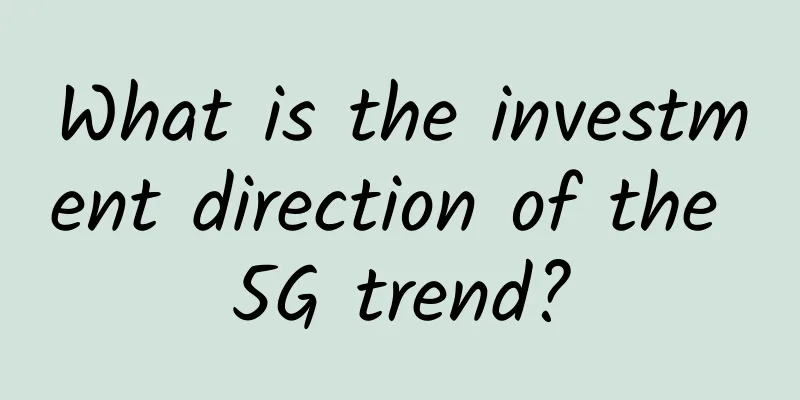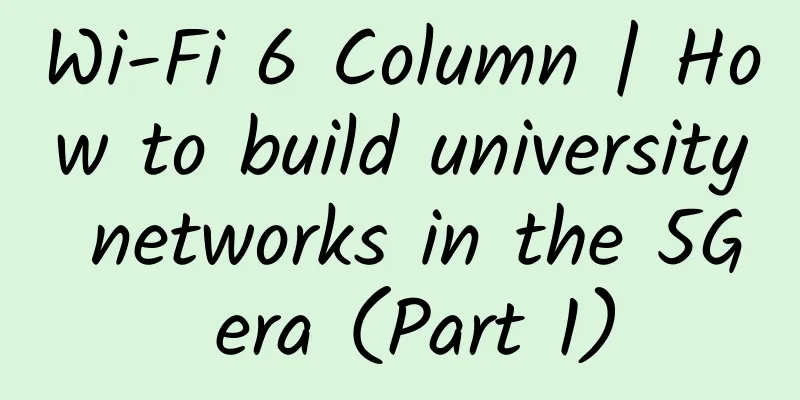Global users' views on 5G: Five keys to commercial success

|
Recently, Ericsson Consumer Lab released the "Five Keys to a Better 5G" report, which is the largest global 5G consumer research to date. The research covers consumers in 26 markets including China, the United States, South Korea, and the United Kingdom, representing 1.3 billion smartphone users and 220 million 5G users worldwide. According to Ericsson Northeast Asia Chief Marketing Officer Zhang Zhiwei, this report shows the global users' cognition, evaluation and expectations of 5G, and also provides many inspirations for 5G to achieve commercial success as soon as possible.
Consumers' intention to upgrade to 5G increasesThe number of regional markets launching 5G commercial services continues to increase, but there is a large gap in the world in terms of awareness of 5G and intention to upgrade. On the question of whether to buy 5G smartphones, the results of Ericsson's survey in December 2020 were significantly more positive than those in March 2019, with an average global increase of about 2%, reaching about 39%. Although India has not yet achieved 5G commercialization, the growth rate of consumers' intention to buy 5G mobile phones is the largest. In regional markets where 5G commercial services have been launched, the purchasing intention of consumers in the United States and South Korea has increased, while the purchasing intention of Chinese consumers has decreased by 7%, but the absolute proportion is very high. 51% of smartphone users in major Chinese cities want to use 5G. European consumers in Italy, France, Germany, the United Kingdom and Finland have a relatively mild intention to upgrade. Ericsson analyzed in the report that this may be related to factors such as the slow construction of 5G networks and the delay in the launch of commercial services. At the same time, the loss of public income caused by the epidemic and some unfavorable information about 5G may also have affected consumers' willingness to upgrade to a certain extent. Taking into account current 5G smartphone ownership, public opinion, income and demographics, Ericsson expects only 21% of consumers will actually upgrade to 5G in 2021, with the rest following in 2022 or later. This means that at least 300 million consumers in the 20 markets surveyed by Ericsson could become 5G users in 2021, a number that could increase if 5G services are launched in other markets such as India, Brazil and Indonesia in 2021. There is a bias in 5G perceptionAccording to Ericsson's research, influenced by various marketing statements, there is a significant deviation in consumers' perception of 5G devices and services, which has affected the public's attitude towards 5G to a certain extent. In the 20 regional 5G markets participating in the survey, an average of 4% of consumers own 5G smartphones and have signed up for 5G services. At the same time, 22% of consumers own 5G phones but are still using 4G services; 4% of users believe they are using 5G packages, but they are actually using 4G phones. In China, the proportion of people who claim to have purchased 5G packages but actually use 4G phones is 5%, and the "5G package customers" referred to by Chinese operators generally include anyone who has signed up for 5G services, regardless of whether they use 5G devices or can access 5G networks. In the United States, 14% of users who claim to use 5G services actually use 4G phones, and 12% of users with 5G phones say they have signed up for 4G services. The above statistics show that consumers have a lot of confusion and errors in their understanding of 5G devices, networks, services, and packages, which can be attributed to the operators' promotional strategies to a certain extent. In addition, some technical concepts in the ICT industry have also exacerbated consumers' cognitive confusion. For example, a large number of WiFi devices currently use the 5GHz frequency band, and many consumers confuse this "5G" with the 5G network. It is worth noting that as global mobile phone manufacturers shift their production focus to 5G products, the proportion of consumers owning 5G mobile phones is increasing, which has laid a very good foundation for operators to develop 5G business. Ericsson found in its research that in markets without commercial 5G networks such as India and Indonesia, 22% of mobile phone users are using 5G-enabled mobile phones. 5G improves network satisfactionCompared with 4G LTE mobile phone users, 5G early users are more satisfied with the network. According to the survey, the satisfaction of users using 5G mobile phones and 5G packages is 10% higher than that of 4G users on average, which is of course related to the performance of the local 5G network. In Switzerland, 59% of respondents are very satisfied with the performance of the 5G network, compared to only 30% of respondents who are satisfied with the 4G network. The satisfaction of 5G users in the United States is 14% higher than that of 4G users, showing the competitive advantage of 5G services. The situation in South Korea is different. 31% of respondents are very satisfied with 4G, while 27% of respondents are satisfied with 5G. The main reason is that there is a gap between the operator's publicity and the actual performance of the local 5G network, and there are problems such as high package prices and poor indoor coverage. Ericsson believes that this is determined by the actual situation in the early stage of 5G commercial deployment, and does not mean that South Korea's 5G network is worse than other regions. Ericsson compared the survey results when South Korea launched 4G services in 2012-2013 and found that Korean consumers have much higher expectations for operators. Performance, coverage, and novel services are indispensable. The COVID-19 pandemic has led to restrictions on public activities in many countries, and people have to spend more time at home. What changes will this bring to the demand for 5G? When analyzing consumer satisfaction, Ericsson found that 5G indoor coverage and 5G speed in places such as homes and shopping malls are very important. In South Korea, as many as half of the respondents were dissatisfied with indoor 5G coverage, and the proportion in Taiwan was 40%. The situation in Australia was slightly better, with 35% of respondents satisfied with indoor coverage and 24% dissatisfied. 5G changes usage behaviorAs 5G performance improves and its use becomes more prevalent, users are forming some new behavioral habits, such as using 5G to replace WiFi and using 5G to connect to high-traffic applications. In markets such as the United States, Taiwan, Switzerland, Finland, and South Korea, 5G users have a high percentage of unlimited data packages, 22% of users have reduced their home WiFi usage, and 10% of users even claim that they will no longer use WiFi after upgrading to 5G. After some families with broadband upgrade to 5G, their dependence on WiFi has dropped even more. Compared with 4G users, 5G users will use large-bandwidth immersive digital services more actively. According to statistics, 5G users not only spend two more hours a week watching mobile HD streaming videos, but also begin to use enhanced video applications that use multi-perspective and 360-degree streaming video content. In terms of services such as cloud gaming and AR, 5G users' weekly usage time has increased by an average of 2 hours and 1 hour respectively. In 2020, American users spent an average of one hour per week on cloud gaming services such as Nvidia GeForceNOW. In South Korea, the time 5G users spend using cloud gaming services is also gradually increasing. Overall, early 5G users have increased their monthly data usage by 2.5 times compared to 4G users. In most markets, 5G users are happy to recommend their packages to other users, which is good news for 5G operators. However, Ericsson believes that early 5G users will be more tolerant and believe that operators are working hard to improve the network and services, but this tolerance is time-limited. If operators cannot launch interesting new applications and services in addition to the increased network speed, which is what people used to call "killer applications", user satisfaction will decline. According to the survey, 5G users are relatively satisfied with the network speed, but 70% of users are dissatisfied with the innovative applications and services bundled with 5G packages. Five expectations of consumers for 5GAccording to Ericsson's research, consumers have five main expectations for 5G: to effectively improve productivity and efficiency, to provide creative applications and services, to offer new ways to connect and socialize, to bring more amazing and surprising services, and to bring more free personal experiences. In terms of the price of 5G packages, users are willing to pay an average of 10% more for faster 5G services, and are willing to pay more for packages bundled with innovative digital services. Currently, the price of 5G packages around the world is usually much more expensive than 4G packages. Mobile phone users in Australia and the United Kingdom are willing to pay an additional 7%, while users in the UAE and China are willing to pay 30% and 45% respectively. In terms of specific 5G services, American users are very interested in 5G fixed wireless access services. Many users in large cities have gradually abandoned cable TV and switched to 5G access services bundled with streaming services. Globally, 67% of consumers are willing to pay for 5G TV services, and 57% of consumers are willing to pay for multi-perspective sports events, concerts and other film and television services. Ericsson emphasized in the report that 5G connections can bring revenue growth to operators, but the biggest revenue growth will come from the business model that bundles application services with 5G packages, so that 5G networks can obtain higher user value. Ericsson recommends that 5G operators and the industry ecosystem accelerate the commercialization of 5G applications, which can both meet consumer needs and fully unleash the revenue potential of 5G. |
<<: Verizon launches 5G private network in the United States and officially launches commercial use
Recommend
Learn more about the basic features of Linkerd 2.10 and step into the era of Service Mesh microservice architecture
[[405370]] Linkerd provides many features, such a...
4G loopholes cannot be plugged and 5G cannot be the savior
Two American universities have discovered a large...
iPhone 12 may not support 700MHz band, causing concerns in the UK telecom industry
According to the information currently available,...
South Korea's largest telecom operator's server failure caused widespread Internet outages
According to CCTV Finance, starting at 11:20 a.m....
The mutual impact of 5G and AI
When it comes to tech innovation, it seems like w...
edgeNAT: 20% off for monthly VPS and 30% off for annual VPS, top up 600 yuan and get 100 yuan free, available in Hong Kong/Korea/US data centers
edgeNAT has released a promotional plan for June,...
How does 5G open the door to huge technological advancement for manufacturing companies?
The rollout of 5G is expected to usher in the Fou...
Learn crawling skills in Yiwen
[[336016]] Preface As an important tool for cold ...
AkkoCloud: UK CN2 GIA/Germany CN2 GIA/US CN2 GIA high bandwidth VPS quarterly payment starts from 99 yuan
We know that the CN2 GIA line is one of the relat...
DesiVPS: $25/year KVM-2GB/40GB/1Gbps unlimited traffic/Los Angeles data center, free IP change 3 times a year
DesiVPS has just sent out the latest promotional ...
Unified, standardized, and intelligent, Borei Data OneAlert helps reduce costs and increase efficiency in operation and maintenance
With the cloudification of IT infrastructure, the...
51CTO takes you to the scene of the 2017 Huawei All Connect Conference wonderful photos
[51CTO.com original article] The three-day 2017 H...
Five-minute technical talk | HTTP evolution history
Part 01 Protocol Introduction HTTP is the most po...
How 5G contributes to Industry 4.0
During the COVID-19 pandemic, industries across t...









